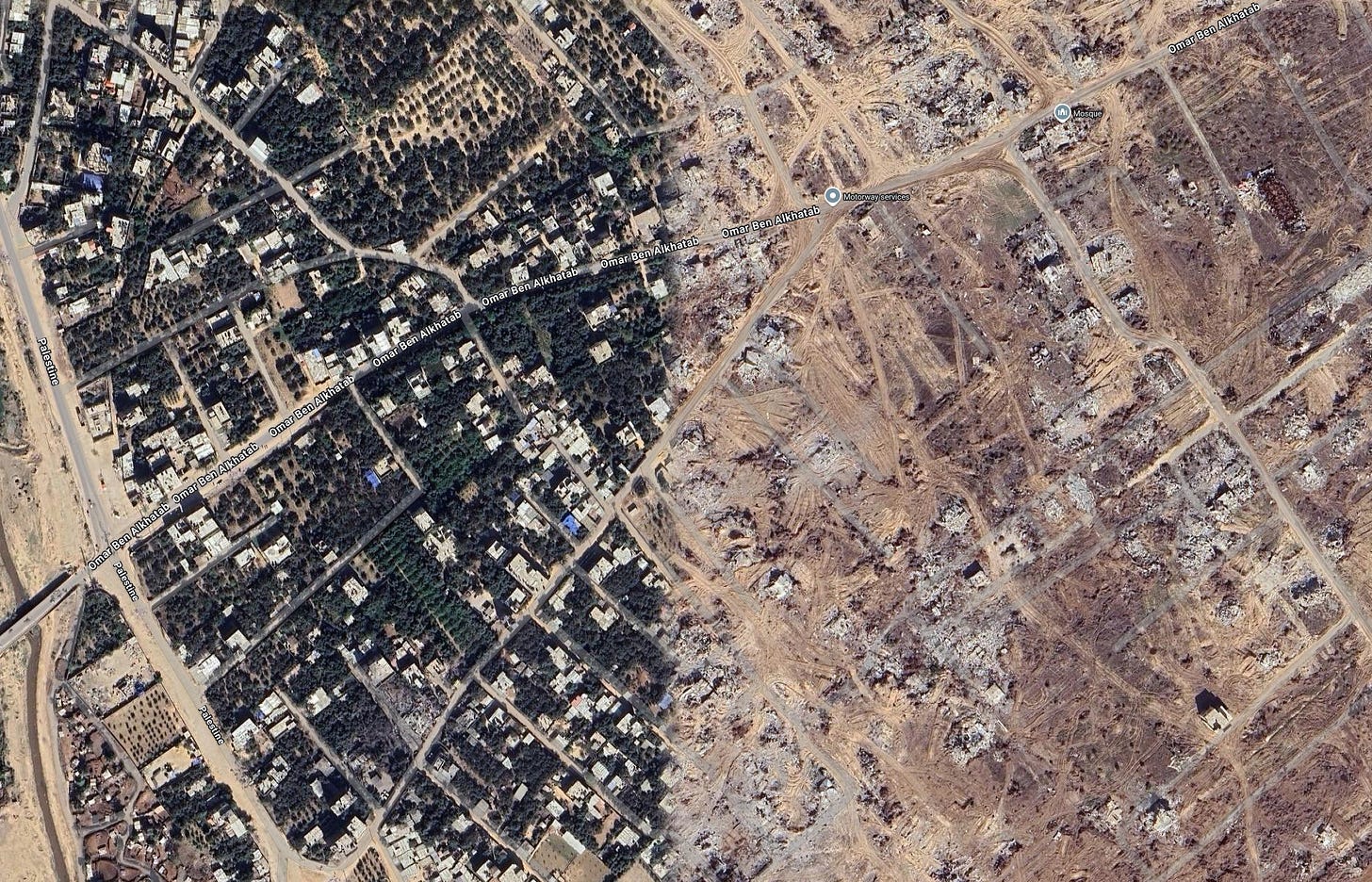Google’s Quiet Censorship of Gaza’s Satellite Imagery
Google have begun showing users older images of Gaza, hiding the devestation of Israel's campaign of Genocide began.
Open Google Maps. Zoom in on Gaza. The streets look mostly intact, buildings stand in place, and the dense neighborhoods of Rafah, Khan Younis, and Gaza City are frozen in time. There is no sign of the pulverized city blocks, very little scarred earth, not much hint of the mass displacement that has reshaped the territory.
But this Gaza is a lie.
Keep reading with a 7-day free trial
Subscribe to The Crustian Daily to keep reading this post and get 7 days of free access to the full post archives.



